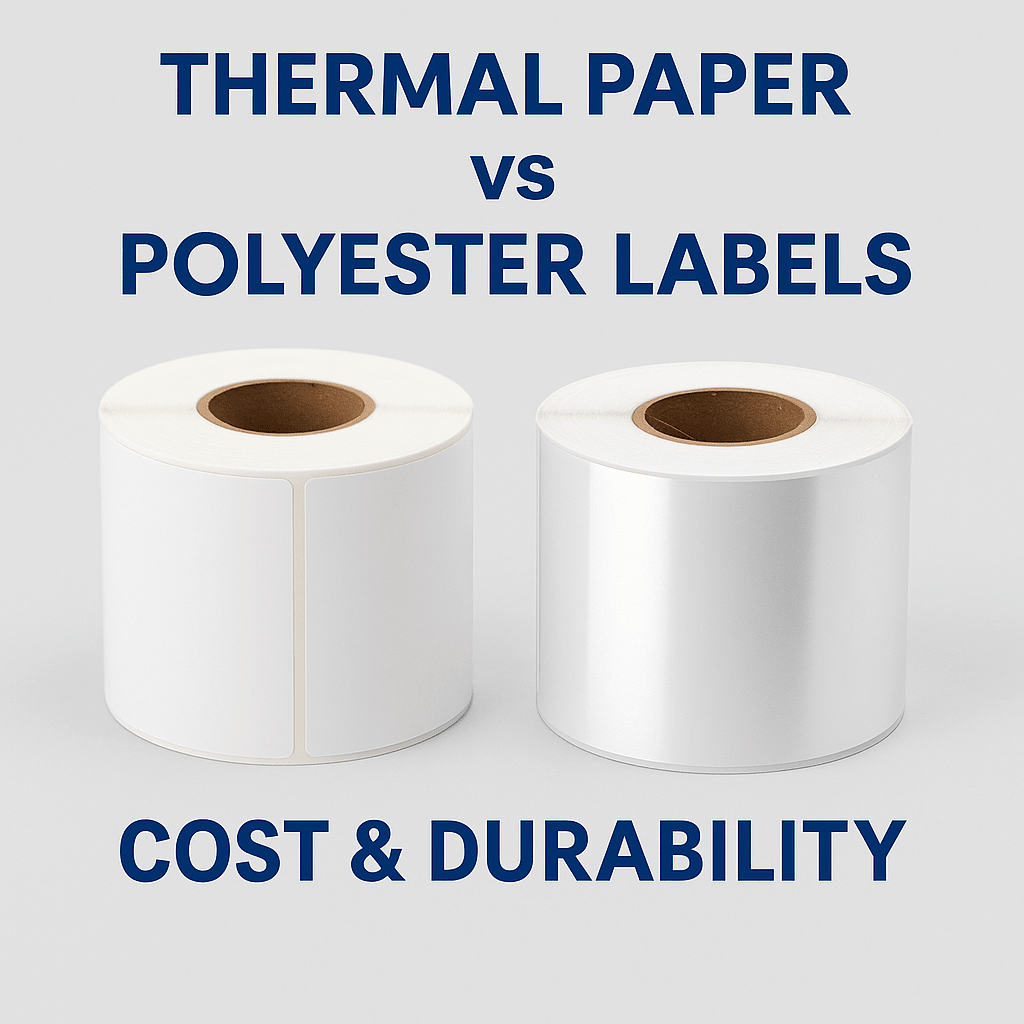If you’ve ever wondered why some labels fade quickly while others stay clear for years, the answer lies in the material. Thermal paper and polyester labels are the two most popular options for GoDEX and other thermal printers—but they’re built for very different jobs.
In this guide, we’ll break down how each label type performs, where they work best, and how to balance cost and durability for your business.
1. Thermal Paper Labels – Affordable and Fast for Everyday Use
Best for: shipping, retail, and short-term applications
Thermal paper labels are printed using direct heat, without the need for ribbons. This makes them extremely cost-effective and easy to use.
However, they’re also more sensitive to heat, moisture, and sunlight—fading over time or darkening when exposed to friction or chemicals.

Pros
-
Lowest cost per roll
-
Ideal for high-volume, temporary labeling
-
No ribbon required (less maintenance)
-
Fast, quiet printing
Cons
-
Fades with light, heat, or water exposure
-
Limited shelf life (6–12 months)
-
Not suitable for outdoor or industrial use
💡 Pro Tip: Store thermal paper rolls in a cool, dry place to prevent early fading.
🧩 Related reading: How to Store and Handle Thermal Labels to Prevent Fading
2. Polyester Labels – Built for Durability and Harsh Environments
Best for: asset tags, equipment labeling, and long-term tracking
Polyester labels are printed using thermal transfer technology, meaning they require a ribbon (usually resin). This combination produces a durable, chemical-resistant image that lasts for years.
They’re waterproof, scratch-resistant, and ideal for labeling products or machinery exposed to heat, sunlight, and oil.

Pros
-
Waterproof and tear-proof
-
Resistant to oil, solvents, and UV exposure
-
Long-term readability (3–5+ years)
-
Professional, high-contrast finish
Cons
-
Higher upfront cost per roll
-
Requires ribbon for printing
-
Overkill for short-term or disposable labels
🧩 Shop recommended option: GoDEX Thermal Transfer Labels – Waterproof & Durable Polyester
3. Comparing Costs and Use Cases
| Feature | Thermal Paper | Polyester |
|---|---|---|
| Printer Type | Direct Thermal | Thermal Transfer |
| Durability | 6–12 months | 3–5 years+ |
| Water / Oil Resistance | ❌ Poor | ✅ Excellent |
| Cost Per Roll | $ | $$$ |
| Best For | Shipping, Receipts | Industrial, Asset Tracking |
| Requires Ribbon | No | Yes |
4. Which Should You Choose?
-
Choose Thermal Paper if your goal is speed, simplicity, and low-cost short-term labeling.
-
Choose Polyester if you need labels that can handle moisture, sunlight, or industrial conditions without fading.
For many businesses, the best solution is to use both:
-
Thermal paper for shipping and daily logistics
-
Polyester labels for long-term assets, compliance, and storage
✅ Conclusion
Thermal paper and polyester labels serve different needs, but both are essential for efficient business operations.
If you’re printing with a GoDEX thermal printer, you can easily switch between the two depending on your workflow.
🛒 Explore both options at McAuley Labels:

